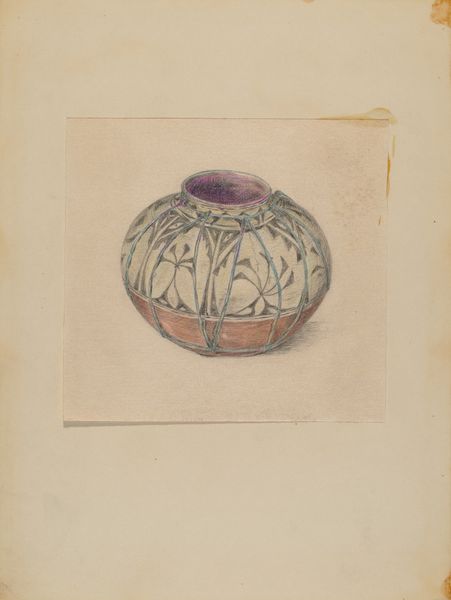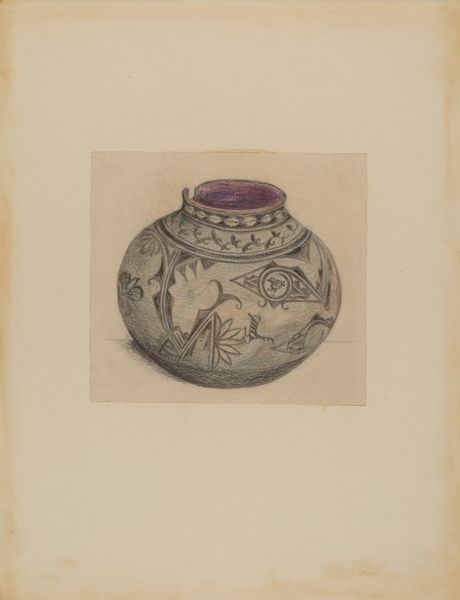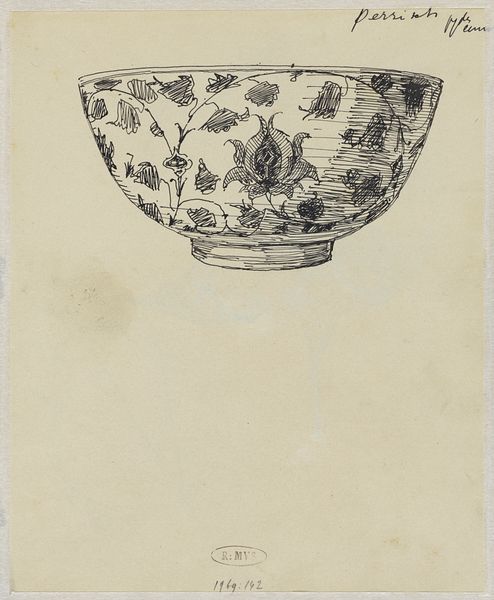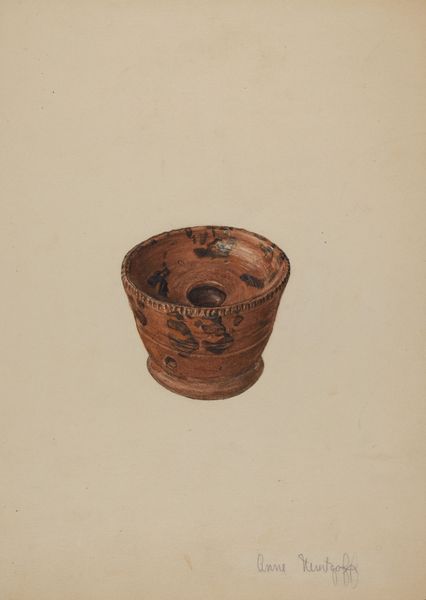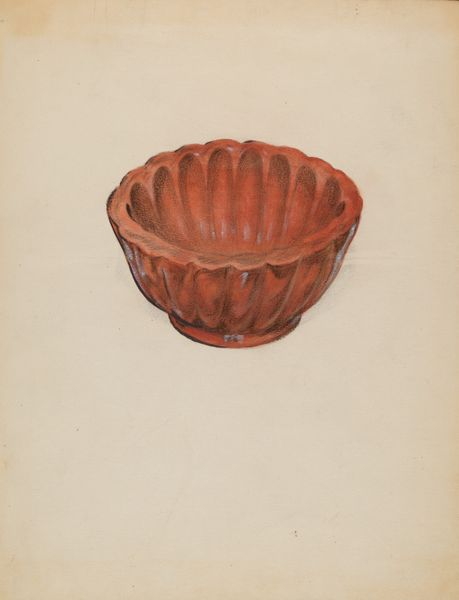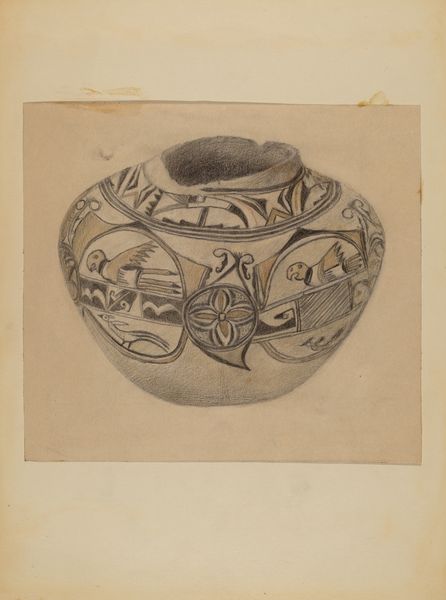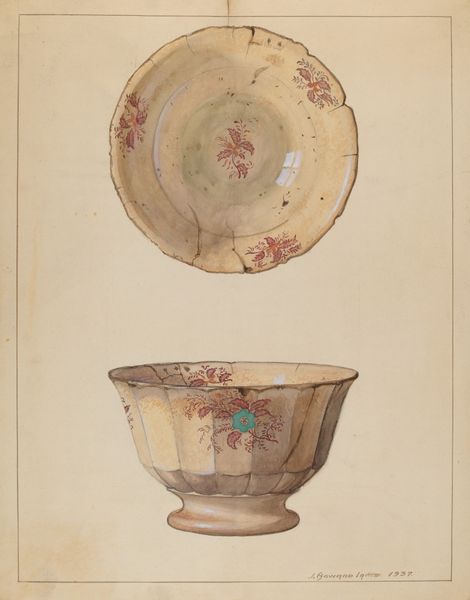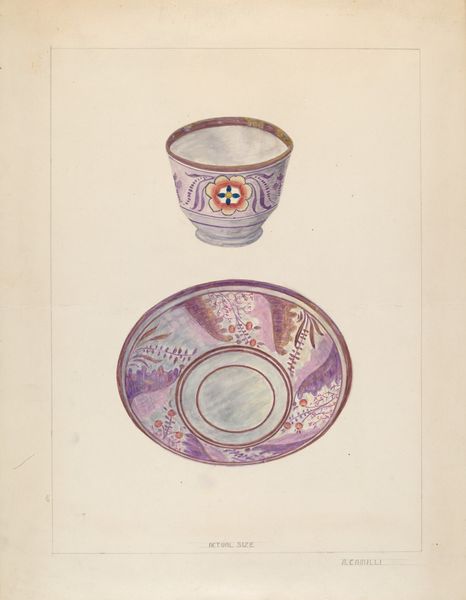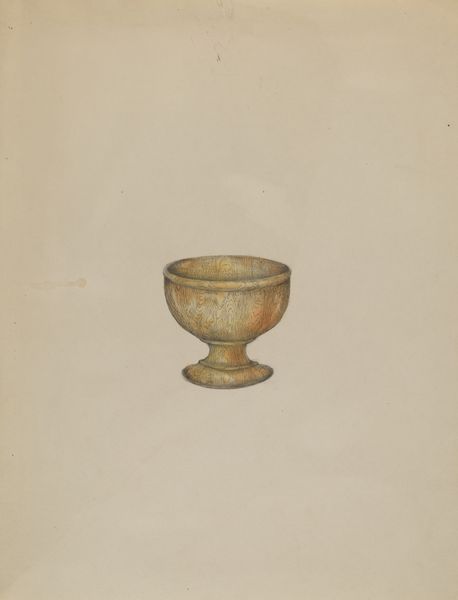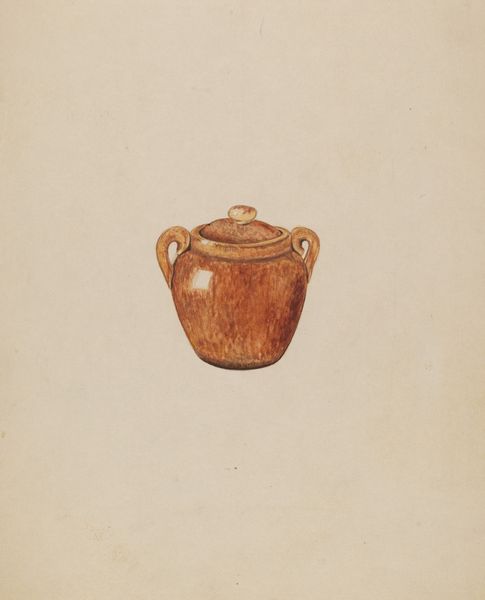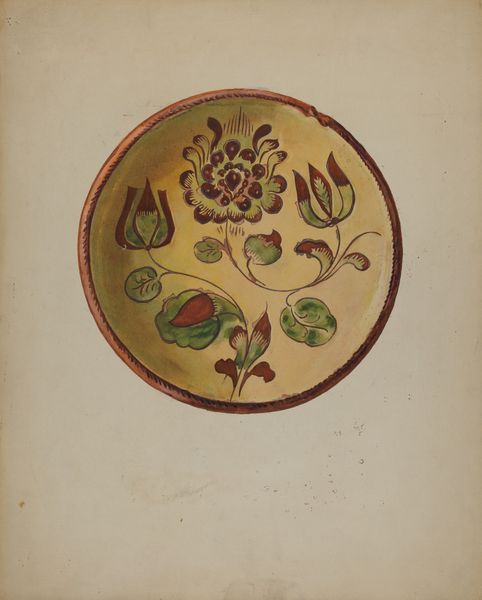
drawing, coloured-pencil, pencil
#
still-life
#
drawing
#
coloured-pencil
#
figuration
#
form
#
pencil
Dimensions: overall: 10.4 x 11.7 cm (4 1/8 x 4 5/8 in.)
Copyright: National Gallery of Art: CC0 1.0
Editor: Here we have Mary Berner's "Vessel," created sometime between 1935 and 1942. It's a delicate watercolor and drawing of an indigenous-style pot, but the presentation on paper, removed from its practical origins, gives it a kind of poignant stillness. What stands out to you when you look at this piece? Curator: I'm struck by the implied labor involved in both the creation of the pot itself and then the artist’s rendering of it. Berner isn't just depicting an object; she's engaging with a system of production and value. Consider the physical work inherent in pottery making – the digging of clay, the forming of the vessel, the firing process – mirrored here in the careful, painstaking mark-making of her drawing. Editor: That's a really interesting point – I hadn’t thought about the parallel between the processes of making the pot and making the image of the pot. Curator: Absolutely. And how does this recontextualization, this move from utilitarian object to artistic subject, alter its inherent meaning or value in the context of consumerism, the market and class. What happens when craft traditions are represented as art? Editor: So you’re thinking about it less as an aesthetic representation and more as a kind of commentary on labor and value? Curator: Precisely. How does the material transformation, from clay to pot to watercolor, shift the narrative surrounding indigenous artistry and labor? The work challenges traditional high art/craft boundaries. It makes you think about cultural appropriation too. Editor: I see it now. Viewing the artwork with a materialist lens opens up so many layers of meaning! It pushes me to go beyond surface-level observations. Curator: Agreed. It's a great reminder that art is never separate from the means of its making, and from the broader societal systems it reflects and influences.
Comments
No comments
Be the first to comment and join the conversation on the ultimate creative platform.
